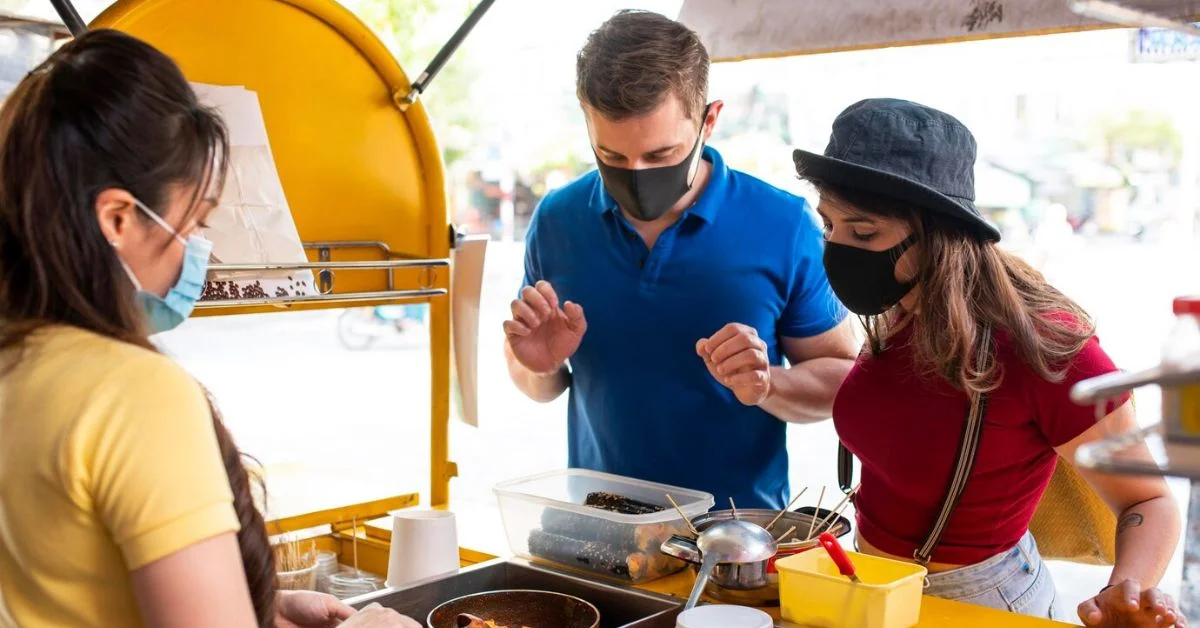Introduction to Chinatown Hawker Leftovers Consumption
Chinatown is a vibrant hub of culture, flavors, and culinary traditions that beckon food lovers from all walks of life. Among the bustling stalls and aromatic dishes lies a lesser-known gem—the practice of consuming leftovers from hawker centers. This phenomenon not only speaks volumes about resourcefulness but also highlights the deep-rooted connections to sustainability within this community. As we dive into the world of Chinatown hawker leftovers consumption, prepare to discover fascinating insights that illuminate both its history and significance in today’s society. From delicious meals waiting for their second chance to savoring every bite with purpose, there’s much more than meets the eye in this delectable journey through Chinatown’s culinary landscape.
The History and Culture of Hawker Centers in Chinatown
Hawker centers in Chinatown represent a vibrant tapestry of culinary heritage. These communal dining spots emerged in the 19th century, born from street food traditions brought by immigrants. They became essential hubs for social interaction and cultural exchange.
As migration patterns evolved, so did the variety of offerings at these centers. Each dish tells a story, reflecting the diverse backgrounds of those who settled here. From Hainanese chicken rice to spicy laksa, every bite is steeped in history.
The atmosphere buzzes with energy as families and friends gather around shared tables. This communal experience fosters connections among diners from all walks of life.
Moreover, hawker centers embody resilience; they adapt over time while preserving traditional recipes and cooking techniques that have been passed down through generations. The essence of Chinatown lives on within these bustling spaces filled with mouth-watering aromas and laughter echoing off the walls.
The Benefits of Consuming Hawker Leftovers
Consuming hawker leftovers is a delightful way to experience authentic cuisine at a fraction of the cost. These dishes, often packed with flavor, showcase rich culinary traditions that have been passed down through generations.
Leftovers from hawker stalls are typically generous in portion size. This means you can enjoy multiple flavors in one meal without breaking the bank.
Choosing to eat leftovers also supports local vendors. By purchasing these meals, you’re helping small businesses thrive while reducing food waste. It creates a win-win situation where both your taste buds and community benefit.
Moreover, many hawkers take pride in their offerings, ensuring that even what’s left over is still fresh and delicious. Enjoying these remnants allows for an authentic dining experience that’s unique to Chinatown’s vibrant culture.
Embracing leftover consumption fosters an appreciation for diverse flavors that may otherwise go unnoticed during peak hours at bustling hawker centers.
Understanding Food Safety and Hygiene in Hawker Centers
Food safety is a crucial aspect of hawker centers. With the bustling activity and high turnover, maintaining hygiene standards can be challenging yet vital.
Hawker stalls often operate in open-air environments. This exposure necessitates regular cleaning and proper food handling practices to prevent contamination. Vendors must adhere to local health regulations, ensuring that all ingredients are fresh and well-stored.
Temperature control plays a significant role in food safety as well. Hot dishes need to stay hot while cold items should remain chilled. Many hawkers employ thermometers to monitor these conditions diligently.
Additionally, water quality is paramount for washing utensils and preparing foods. Stalls with clean running water significantly reduce the risk of bacterial growth.
Customers also play an essential part by choosing vendors who visibly maintain cleanliness at their stations. Observing how food is prepared can provide insight into the stall’s commitment to hygiene practices.
Popular Dishes and Must-Try Leftovers in Chinatown Hawker Centers
Chinatown hawker centers are a treasure trove of flavors. Here, you’ll find iconic dishes that are just as delightful when enjoyed as leftovers.
Hainanese chicken rice is a fan favorite. The succulent chicken paired with fragrant rice makes for an excellent reheatable meal. Add some chili sauce for an extra kick.
Char kway teow brings together flat rice noodles stir-fried with prawns and Chinese sausage, creating a delicious medley of textures and tastes that remain satisfying even the next day.
Don’t overlook laksa, either. This spicy noodle soup offers depth and flavor that can be savored later; its robust broth enhances over time.
Consider satay skewers—grilled to perfection and perfect for munching on cold or warmed up. They make great snacks while exploring the vibrant streets of Chinatown long after your initial feast has ended.
Sustainable Practices and Reducing Food Waste in Hawker Centers
Hawker centers are a vibrant part of Chinatown’s culinary scene, but they also face challenges related to food waste. Many vendors are now adopting sustainable practices to tackle this issue head-on.
One innovative approach involves offering smaller portion sizes. This allows diners to enjoy their favorite dishes without the risk of leftovers going uneaten. Some stalls even encourage customers to order just what they can finish.
Another effective strategy is repurposing unsold food at the end of the day. Instead of tossing away perfectly good meals, some hawkers donate them to local charities or sell them at discounted prices.
Additionally, many centers promote reusable containers and cutlery among patrons. This helps reduce single-use plastics that contribute significantly to waste.
Through these initiatives, hawker centers not only enhance their appeal but also foster a sense of community responsibility toward sustainability in dining habits.
Controversies Surrounding Chinatown Hawker Leftovers Consumption
Chinatown hawker leftovers consumption stirs a mix of opinions. Some view it as resourceful, while others raise concerns about safety and hygiene.
Critics argue that consuming leftover food can pose health risks. They worry that improper storage practices might lead to spoilage or contamination. This perspective often overshadows the benefits of reducing waste.
On the flip side, advocates celebrate the cultural significance of enjoying these meals. Many believe it’s an integral part of urban dining culture, showcasing both flavor and practicality.
Moreover, some hawkers embrace this practice by offering discounted prices for leftover dishes at closing time. This initiative encourages patrons to indulge while helping vendors reduce waste.
Yet debates linger about how best to navigate these complexities in a bustling culinary landscape like Chinatown’s vibrant hawker centers. Balancing sustainability with public health remains a challenging conversation among food lovers and critics alike.
Conclusion
Chinatown hawker leftovers consumption is a rich blend of history, culture, and community spirit. These vibrant hawker centers are not just food courts; they embody the heart and soul of Chinatown’s culinary landscape. With roots tracing back to early immigrant communities, these centers have evolved into vibrant spaces where tradition meets modernity.
Eating leftover dishes from hawkers brings several benefits. It allows diners to savor authentic flavors at reduced prices while minimizing food waste—a crucial consideration in today’s environmentally conscious society. Plus, it contributes positively to local economies by supporting small businesses and preserving cultural heritage.
However, safety concerns regarding hygiene cannot be overlooked. Many hawker centers maintain strict health protocols, ensuring that both fresh meals and leftovers are safe for consumption. Understanding these practices can enhance your dining experience without compromising health.
When exploring popular dishes available as leftovers—such as Char Kway Teow or Hainanese Chicken Rice—you’ll discover hidden gems that reflect the diversity of Chinatown’s offerings. Each bite tells a story steeped in cultural significance.
Sustainable eating also plays a vital role in this conversation. Encouraging responsible consumption helps reduce environmental impact while connecting with others who share similar values about food waste reduction.
Yet there remains some controversy surrounding the practice of consuming leftovers in these bustling hubs. While many embrace this custom wholeheartedly, others raise questions about quality control and food safety standards that warrant attention.
Embracing the concept of consuming Chinatown’s hawker leftovers opens doors to new experiences within this dynamic community space—the flavors are just waiting for you to explore them further!











